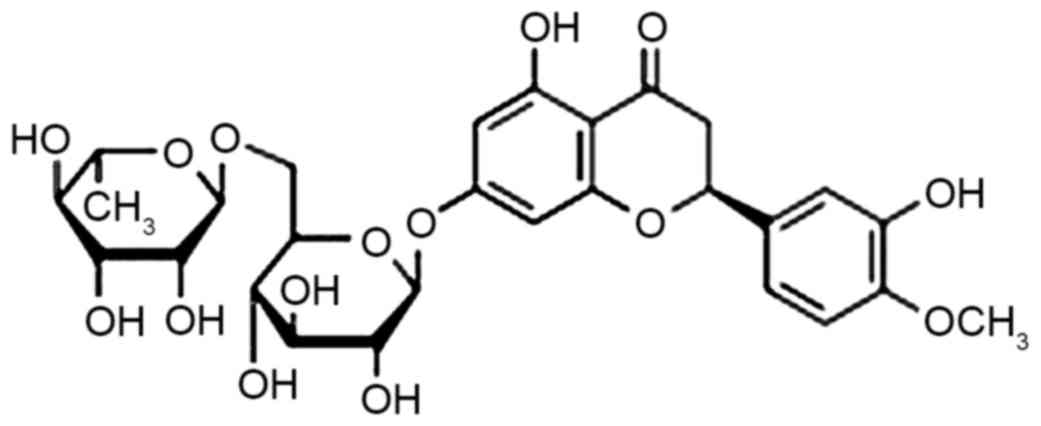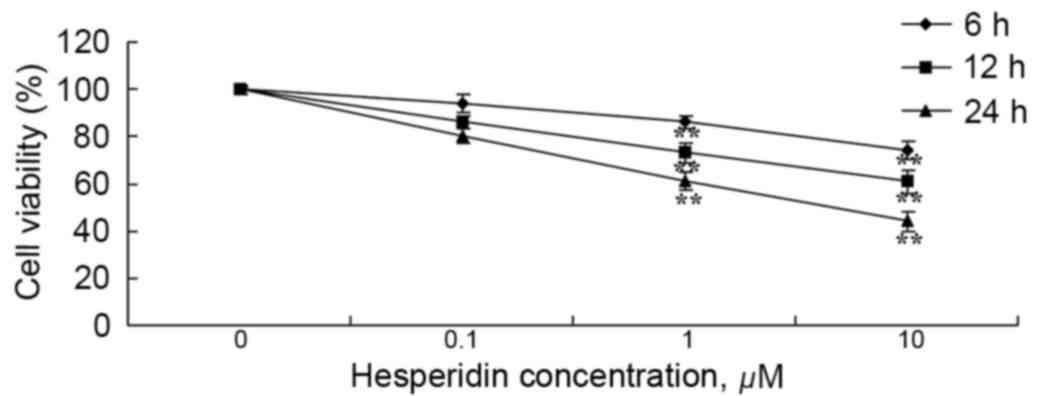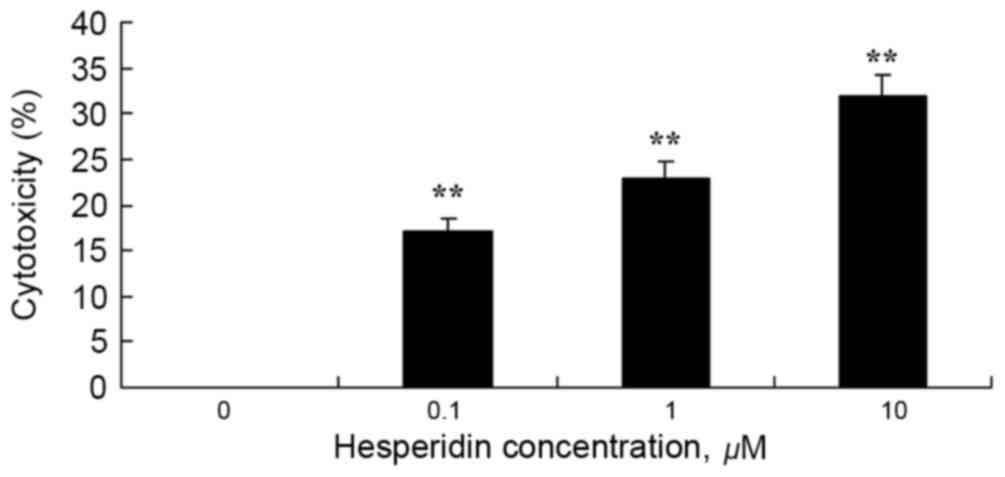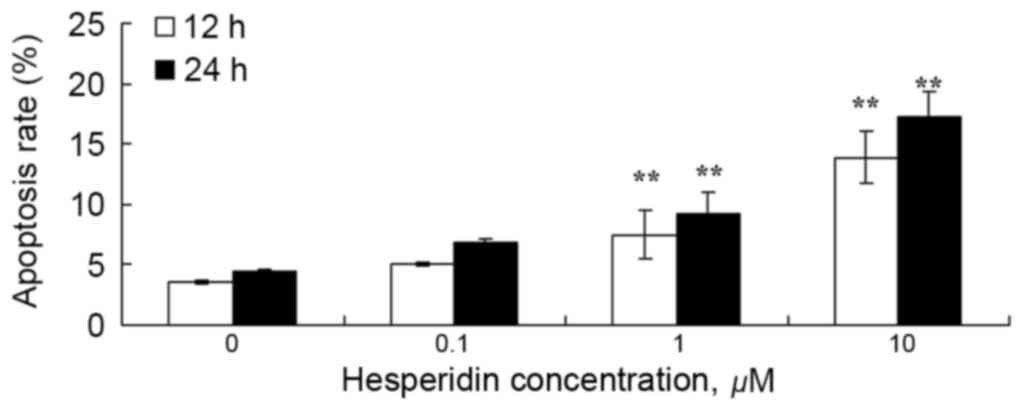|
1
|
Tillmanns TD, Lowe MP, Walker MS,
Stepanski EJ and Schwartzberg LS: Phase II clinical trial of
bevacizumab with albumin-bound paclitaxel in patients with
recurrent, platinum-resistant primary epithelial ovarian or primary
peritoneal carcinoma. Gynecol Oncol. 128:221–228. 2013. View Article : Google Scholar : PubMed/NCBI
|
|
2
|
Köbel M, Kalloger SE, Baker PM, Ewanowich
CA, Arseneau J, Zherebitskiy V, Abdulkarim S, Leung S, Duggan MA,
Fontaine D, et al: Diagnosis of ovarian carcinoma cell type is
highly reproducible: A transcanadian study. Am J Surg Pathol.
34:984–993. 2010. View Article : Google Scholar : PubMed/NCBI
|
|
3
|
Eilati E, Hales K, Zhuge Y, Fricano
Ansenberger K, Yu R, van Breemen RB and Hales DB: Flaxseed enriched
diet-mediated reduction in ovarian cancer severity is correlated to
the reduction of prostaglandin E(2) in laying hen ovaries.
Prostaglandins Leukot Essent Fatty Acids. 89:179–187. 2013.
View Article : Google Scholar : PubMed/NCBI
|
|
4
|
Bobak Y, Kurlishchuk Y,
Vynnytska-Myronovska B, Grydzuk O, Shuvayeva G, Redowicz MJ,
Kunz-Schughart LA and Stasyk O: Arginine deprivation induces
endoplasmic reticulum stress in human solid cancer cells. Int J
Biochem Cell Biol. 70:29–38. 2016. View Article : Google Scholar : PubMed/NCBI
|
|
5
|
Yadunandam AK, Yoon JS, Seong YA, Oh CW
and Kim GD: Prospective impact of 5-FU in the induction of
endoplasmic reticulum stress, modulation of GRP78 expression and
autophagy in Sk-Hep1 cells. Int J Oncol. 41:1036–1042. 2012.
View Article : Google Scholar : PubMed/NCBI
|
|
6
|
Zhang LY, Li PL, Xu A and Zhang XC:
Involvement of GRP78 in the resistance of ovarian carcinoma cells
to paclitaxel. Asian Pac J Cancer Prev. 16:3517–3522. 2015.
View Article : Google Scholar : PubMed/NCBI
|
|
7
|
Huang LW, Lin CY, Lee CC, Liu TZ and Jeng
CJ: Overexpression of GRP78 is associated with malignant
transformation in epithelial ovarian tumors. Appl Immunohistochem
Mol Morphol. 20:381–385. 2012. View Article : Google Scholar : PubMed/NCBI
|
|
8
|
Koomägi R, Mattern J and Volm M:
Glucose-related protein (GRP78) and its relationship to the
drug-resistance proteins P170, GST-pi, LRP56 and angiogenesis in
non-small cell lung carcinomas. Anticancer Res. 19:4333–4336.
1999.PubMed/NCBI
|
|
9
|
Yacoub A, Liu R, Park MA, Hamed HA, Dash
R, Schramm DN, Sarkar D, Dimitriev IP, Bell JK, Grant S, et al:
Cisplatin enhances protein kinase R-like endoplasmic reticulum
kinase- and CD95-dependent melanoma differentiation-associated
gene-7/interleukin-24-induced killing in ovarian carcinoma cells.
Mol Pharmacol. 77:298–310. 2010. View Article : Google Scholar : PubMed/NCBI
|
|
10
|
Lee CS, Kwak SW, Kim YJ, Lee SA, Park ES,
Myung SC, Kim W, Lee MS and Lee JJ: Guanylate cyclase activator
YC-1 potentiates apoptotic effect of licochalcone A on human
epithelial ovarian carcinoma cells via activation of death receptor
and mitochondrial pathways. Eur J Pharmacol. 683:54–62. 2012.
View Article : Google Scholar : PubMed/NCBI
|
|
11
|
Yang HL, Lin KY, Juan YC, Kumar KJ, Way
TD, Shen PC, Chen SC and Hseu YC: The anti-cancer activity of
Antrodia camphorata against human ovarian carcinoma (SKOV-3)
cells via modulation of HER-2′neu signaling pathway. J
Ethnopharmacol. 148:254–265. 2013. View Article : Google Scholar : PubMed/NCBI
|
|
12
|
Xu Y, Zhang J, Shi W and Liu Y: Anticancer
effects of 3,3′-diindolylmethane are associated with G1 arrest and
mitochondria-dependent apoptosis in human nasopharyngeal carcinoma
cells. Oncol Lett. 5:655–662. 2013.PubMed/NCBI
|
|
13
|
Liu Y and Luo W: Betulinic acid induces
Bax'Bak-independent cytochrome c release in human nasopharyngeal
carcinoma cells. Mol Cells. 33:517–524. 2012. View Article : Google Scholar : PubMed/NCBI
|
|
14
|
Ghorbani A, Nazari M, Jeddi-Tehrani M and
Zand H: The citrus flavonoid hesperidin induces p53 and inhibits
NF-κB activation in order to trigger apoptosis in NALM-6 cells:
Involvement of PPARγ-dependent mechanism. Eur J Nutr. 51:39–46.
2012. View Article : Google Scholar : PubMed/NCBI
|
|
15
|
Parhiz H, Roohbakhsh A, Soltani F, Rezaee
R and Iranshahi M: Antioxidant and anti-inflammatory properties of
the citrus flavonoids hesperidin and hesperetin: An updated review
of their molecular mechanisms and experimental models. Phytother
Res. 29:323–331. 2015. View
Article : Google Scholar : PubMed/NCBI
|
|
16
|
Garg A, Garg S, Zaneveld LJ and Singla AK:
Chemistry and pharmacology of the Citrus bioflavonoid hesperidin.
Phytother Res. 15:655–669. 2001. View
Article : Google Scholar : PubMed/NCBI
|
|
17
|
Stermitz FR, Cashman KK, Halligan KM,
Morel C, Tegos GP and Lewis K: Polyacylated neohesperidosides from
Geranium caespitosum: Bacterial multidrug resistance pump
inhibitors. Bioorg Med Chem Lett. 13:1915–1918. 2003. View Article : Google Scholar : PubMed/NCBI
|
|
18
|
Ueda Y, Miyatake T, Nagamatsu M, Yamasaki
M, Nishio Y, Yoshino K, Fujita M, Tsutsui T, Enomoto T and Kimura
T: A phase II study of combination chemotherapy using docetaxel and
irinotecan for TC-refractory or TC-resistant ovarian carcinomas
(GOGO-OV2 study) and for primary clear or mucinous ovarian
carcinomas (GOGO-OV3 Study). Eur J Obstet Gynecol Reprod Biol.
170:259–263. 2013. View Article : Google Scholar : PubMed/NCBI
|
|
19
|
Emons G, Gorchev G, Sehouli J, Wimberger
P, Stähle A, Hanker L, Hilpert F, Sindermann H, Gründker C and
Harter P: Efficacy and safety of AEZS-108 (INN: Zoptarelin
doxorubicin acetate) an LHRH agonist linked to doxorubicin in women
with platinum refractory or resistant ovarian cancer expressing
LHRH receptors: A multicenter phase II trial of the ago-study group
(AGO GYN 5). Gynecol Oncol. 133:427–432. 2014. View Article : Google Scholar : PubMed/NCBI
|
|
20
|
Gelmon KA, Tischkowitz M, Mackay H,
Swenerton K, Robidoux A, Tonkin K, Hirte H, Huntsman D, Clemons M,
Gilks B, et al: Olaparib in patients with recurrent high-grade
serous or poorly differentiated ovarian carcinoma or
triple-negative breast cancer: A phase 2, multicentre, open-label,
non-randomised study. Lancet Oncol. 12:852–861. 2011. View Article : Google Scholar : PubMed/NCBI
|
|
21
|
Cincin Birsu Z, Unlu M, Kiran B, Bireller
Sinem E, Baran Y and Cakmakoglu B: Anti-proliferative, apoptotic
and signal transduction effects of hesperidin in non-small cell
lung cancer cells. Cell Oncol (Dordr). 38:195–204. 2015. View Article : Google Scholar : PubMed/NCBI
|
|
22
|
Delmastro DA, Li J, Vaisman A, Solle M and
Chaney SG: DNA damage inducible-gene expression following platinum
treatment in human ovarian carcinoma cell lines. Cancer Chemother
Pharmacol. 39:245–253. 1997.PubMed/NCBI
|
|
23
|
Kandala PK and Srivastava SK: Regulation
of macroautophagy in ovarian cancer cells in vitro and in vivo by
controlling glucose regulatory protein 78 and AMPK. Oncotarget.
3:435–449. 2012. View Article : Google Scholar : PubMed/NCBI
|
|
24
|
Gately DP, Jones JA, Christen R, Barton
RM, Los G and Howell SB: Induction of the growth arrest and DNA
damage-inducible gene GADD153 by cisplatin in vitro and in vivo. Br
J Cancer. 70:1102–1106. 1994. View Article : Google Scholar : PubMed/NCBI
|
|
25
|
Wang J, Hu X and Jiang H: ERS-PERK
signaling pathway-mediated Nrf2′ARE-HO-1 axis: A novel therapeutic
target for attenuating myocardial ischemia and reperfusion injury.
Int J Cardiol. 203:779–780. 2016. View Article : Google Scholar : PubMed/NCBI
|
|
26
|
Wang Y, Kuramitsu Y, Baron B, Kitagawa T,
Tokuda K, Akada J and Nakamura K: CGK733-induced LC3 II formation
is positively associated with the expression of cyclin-dependent
kinase inhibitor p21Waf1′Cip1 through modulation of the AMPK and
PERK'CHOP signaling pathways. Oncotarget. 6:39692–39701. 2015.
View Article : Google Scholar : PubMed/NCBI
|
|
27
|
Jiang Q, Li F, Shi K, Wu P, An J, Yang Y
and Xu C: ATF4 activation by the p38MAPK-eIF4E axis mediates
apoptosis and autophagy induced by selenite in Jurkat cells. FEBS
Lett. 587:2420–2429. 2013. View Article : Google Scholar : PubMed/NCBI
|
|
28
|
Zheng QY, Li PP, Jin FS, Yao C, Zhang GH,
Zang T and Ai X: Ursolic acid induces ER stress response to
activate ASK1-JNK signaling and induce apoptosis in human bladder
cancer T24 cells. Cell Signal. 25:206–213. 2013. View Article : Google Scholar : PubMed/NCBI
|
|
29
|
Chang CC, Kuan CP, Lin JY, Lai JS and Ho
TF: Tanshinone IIA Facilitates TRAIL Sensitization by Up-regulating
DR5 through the ROS-JNK-CHOP signaling axis in human ovarian
carcinoma cell lines. Chem Res Toxicol. 28:1574–1583. 2015.
View Article : Google Scholar : PubMed/NCBI
|
|
30
|
Zhu X, Wang F, Lin MC, Tian L, Fan W, Ng
SS, Liu M, Huang J, Xu Z, Li D and Kung H: The 3′ UTR variants in
the GRP78 are not associated with overall survival in resectable
hepatocellular carcinoma. PLoS One. 6:e177832011. View Article : Google Scholar : PubMed/NCBI
|
|
31
|
Zhu X, Chen MS, Tian LW, Li DP, Xu PL, Lin
MC, Xie D and Kung HF: Single nucleotide polymorphism of rs430397
in the fifth intron of GRP78 gene and clinical relevance of primary
hepatocellular carcinoma in Han Chinese: Risk and prognosis. Int J
Cancer. 125:1352–1357. 2009. View Article : Google Scholar : PubMed/NCBI
|
|
32
|
Wang Y, Yu H, Zhang J, Gao J, Ge X and Lou
G: Hesperidin inhibits HeLa cell proliferation through apoptosis
mediated by endoplasmic reticulum stress pathways and cell cycle
arrest. BMC Cancer. 15:6822015. View Article : Google Scholar : PubMed/NCBI
|
|
33
|
Liu G, Wang T, Wang T, Song J and Zhou Z:
Effects of apoptosis-related proteins caspase-3, Bax and Bcl-2 on
cerebral ischemia rats. Biomed Rep. 1:861–867. 2013. View Article : Google Scholar : PubMed/NCBI
|
|
34
|
Yuan Z, Cao K, Lin C, Li L, Liu HY, Zhao
XY, Liu L, Deng HX, Li J, Nie CL and Wei YQ: The p53 upregulated
modulator of apoptosis (PUMA) chemosensitizes intrinsically
resistant ovarian cancer cells to cisplatin by lowering the
threshold set by Bcl-x(L) and Mcl-1. Mol Med. 17:1262–1274. 2011.
View Article : Google Scholar : PubMed/NCBI
|
|
35
|
Chen H, Liang ZW, Wang ZH, Zhang JP, Hu B,
Xing XB and Cai WB: Akt activation and inhibition of cytochrome C
release: Mechanistic insights into Leptin-promoted survival of type
II alveolar epithelial cells. J Cell Biochem. 116:2313–2324. 2015.
View Article : Google Scholar : PubMed/NCBI
|
|
36
|
Adam AC, Scriba A, Ortmann M, Huss S, Kahl
P, Steiner S, Störkel S and Büttner R: Immunohistochemical analysis
of cytochrome C oxidase facilitates differentiation between
oncocytoma and chromophobe renal cell carcinoma. Appl
Immunohistochem Mol Morphol. 23:54–59. 2015. View Article : Google Scholar : PubMed/NCBI
|
|
37
|
Feng X, Ching CB and Chen WN: EBV
up-regulates cytochrome c through VDAC1 regulations and decreases
the release of cytoplasmic Ca2+ in the NPC cell line. Cell Biol
Int. 36:733–738. 2012. View Article : Google Scholar : PubMed/NCBI
|
|
38
|
Saiprasad G, Chitra P, Manikandan R and
Sudhandiran G: Hesperidin induces apoptosis and triggers autophagic
markers through inhibition of Aurora-A mediated
phosphoinositide-3-kinase/Akt/mammalian target of rapamycin and
glycogen synthase kinase-3 beta signalling cascades in experimental
colon carcinogenesis. Eur J Cancer. 50:2489–2507. 2014. View Article : Google Scholar : PubMed/NCBI
|


















